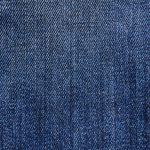Do you want to know if the fabric you have is 100% cotton? Look no further! This article will guide you through simple tests to determine the authenticity of your fabric.
By visually inspecting, conducting a burn test, checking for labeling, performing a water absorption test, and evaluating the thread count, you’ll be able to confidently identify if your fabric is made of pure cotton.
So, let’s dive in and unravel the mystery of fabric composition!
Table of Contents
Visual Inspection
To determine if the fabric is 100% cotton, you can visually inspect the fabric for any synthetic fibers. Start by examining the color of the fabric. Cotton fibers have excellent dye absorption, resulting in vibrant and even coloration. If the fabric displays any color variations or inconsistencies, it may contain synthetic fibers blended with cotton.
Additionally, observe the fabric’s texture. Cotton is known for its soft and breathable feel. Run your fingers across the fabric to check for any rough or synthetic textures that could indicate the presence of polyester or other synthetic materials.
Pay attention to the fabric’s weight as well. Cotton fabrics are typically lightweight and airy, while synthetic fabrics tend to be heavier.
Burn Test
The quickest way to determine the composition of the fabric is by performing a burn test. This simple test involves burning a small piece of fabric and observing the resulting flame, smoke, and ash. Each fabric composition has a unique chemical reaction when exposed to heat, allowing you to identify if the fabric is 100% cotton or not.
To perform a burn test, you will need a small sample of fabric, a lighter or match, and a non-flammable surface to conduct the test on. Here is a table that outlines the different reactions and characteristics of fabric compositions during a burn test:
| Fabric Composition | Flame | Smoke | Ash |
|---|---|---|---|
| 100% Cotton | Orange/yellow, steady flame | Minimal smoke, smells like burning paper | Gray, fine powdery ash |
| Polyester | Melts, black smoke, smells like burning plastic | Black smoke, smells like chemicals | Hard, black bead |
| Wool | Self-extinguishes, smells like burning hair | White smoke, smells like burning hair | Brittle, black ash |
| Silk | Self-extinguishes, smells like burning hair or feathers | White smoke, smells like burning hair or feathers | Brittle, black ash |
| Rayon | Melts, black smoke, smells like burning paper | Black smoke, smells like burning paper | Hard, black bead |
Check for Labeling
Make sure you check the label on the fabric for information about its composition. The label will provide you with important details about the fabric’s care instructions and fabric composition.
Here are four key things to look for on the label:
-
Fabric Composition: The label should clearly state the fabric’s composition. For example, it may indicate that the fabric is made of 100% cotton or a blend of cotton and other materials. This information will help you determine if the fabric is indeed 100% cotton.
-
Care Instructions: The label will also provide care instructions for the fabric. It will specify how to properly clean, wash, and care for the fabric to ensure its longevity. Following these instructions will help maintain the fabric’s quality.
-
Symbols and Icons: Some labels may use symbols or icons to convey care instructions. Familiarize yourself with common symbols such as washing, ironing, and drying symbols. Understanding these symbols will assist you in properly caring for the fabric.
-
Manufacturer Information: The label may also include information about the fabric’s manufacturer or brand. This can be useful if you have any questions or concerns about the fabric and need to contact the manufacturer for further assistance.
Conduct a Water Absorption Test
Check the water absorption of the fabric by placing a small droplet on its surface and observing how quickly it is absorbed. This test can help determine if the fabric is made of 100% cotton since cotton has high water absorption properties.
To assess fabric texture, conduct a color fading test. Choose an inconspicuous area of the fabric and rub it gently with a white cloth soaked in water. If the color transfers onto the cloth, it may indicate that the fabric is not colorfast and may fade when washed.
To further evaluate the fabric, consider its texture. Run your fingers along the fabric to feel its surface. Cotton fabrics typically have a soft and smooth texture. They are also known for their breathability and comfort.
Here is a table to summarize the steps for conducting the water absorption test, color fading test, and assessing fabric texture:
| Test | Steps |
|---|---|
| Water Absorption Test | 1. Place a small droplet on the fabric’s surface. |
| 2. Observe how quickly the droplet is absorbed. | |
| Color Fading Test | 1. Rub an inconspicuous area with a wet white cloth. |
| 2. Check if the color transfers onto the cloth. | |
| Assess Fabric Texture | 1. Run your fingers along the fabric’s surface. |
| 2. Note the softness and smoothness of the fabric. |
Perform a Thread Count Evaluation
To evaluate the thread count of the fabric, you can use a magnifying glass to closely examine the number of threads per square inch. Thread count refers to the number of horizontal and vertical threads woven together in one square inch of fabric. A higher thread count generally indicates a higher quality fabric, as it means there are more threads tightly woven together, resulting in a smoother and more durable fabric.
When performing a thread count evaluation, start by laying the fabric flat on a clean surface. Then, use a magnifying glass to closely inspect a small area of the fabric. Count the number of horizontal threads and vertical threads within a one-inch square. Make sure to count both the visible threads and those that are partially obscured.
In addition to thread count, color evaluation and fabric texture analysis are also important factors in determining the quality and composition of the fabric. Color evaluation involves checking for consistency and vibrancy of color throughout the fabric. Fabric texture analysis involves feeling the fabric to assess its softness, smoothness, and overall texture.
Conclusion
In conclusion, determining if fabric is 100% cotton can be done through various methods.
Visual inspection allows you to examine the fabric’s texture and appearance.
A burn test involves observing the smell and residue left behind when the fabric is burned.
Checking for labeling can provide information on the fabric’s composition.
Conducting a water absorption test helps identify if the fabric is cotton or synthetic.
Lastly, evaluating the thread count can give an indication of the fabric’s quality.
By using these techniques, you can confidently identify if a fabric is made entirely of cotton.
- How Does Ring Spun Cotton Affect Garment Fit and Shape Retention? - August 13, 2024
- What Are the Challenges in Producing Ring Spun Cotton? - August 13, 2024
- Is Ring Spun Cotton Suitable for Plus-Size Clothing? - August 13, 2024





